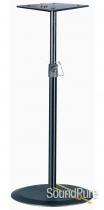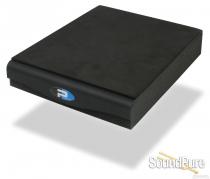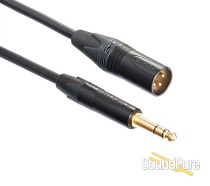-
Call Us Toll Free888-528-9703
-
Local/International (+1)919-682-5552
- Call Us! Toll Free! 888-528-9703
- Local / International (+1) 919-682-5552

$1,359.00
No Sales Tax in 45 States.
Learn More.
Retail: $1,509.00
"Experience the Difference"
Our Free 3-Year Warranty!
In addition to the standard included manufacturer warranty, virtually all new products carry our exclusive, industry-leading, absolutely free, Sound Pure 3-Year Warranty, which includes PARTS & LABOR. This high-value perk is our way of providing the ultimate in added value to enhance the unique personal touch our small, dedicated team contributes to each purchase.
Learn more »
This Product Ships Free!
Products ship from our well-located, climate- and humidity-controlled warehouse absolutely free (inside the continental USA). Low-cost international shipping options exist for most products.
Contact us for details »
Ships Quick!
Usually ships 3 - 5 business days after order processed.
 Payments as low as $30/mo.
Payments as low as $30/mo.
Manufacturer's Description from Drawmer
Building on the success of the MC2.1, the MC3.1 Monitor Controller is just as accurate and transparent and of the same build quality. It can still faithfully reproduce what has been recorded without colouring the sound, but comes with a much expanded feature set, including more inputs, better control, extended channel routing and a desk top 'wedge' form factor.
Additions include a combined digital AES/SPDIF (24 bit/192kHz) input, giving a total of 5 individually switchable sources, including a front panel auxilary input with level control for the easy connection of your mp3 player, smartphone or tablet. Full cue mix facilities, with level control, provide separate source selection for main or cue outputs and the two headphone amplifiers, so the artist can listen to a completely different mix to the engineer, for example. A dedicated cue mix output is also available.
A secondary preset volume control on the front provides repeatable calibrated output level for the monitors, so that at the flick of a switch the engineer can hear the mix at the same predetermined volume, time after time, without having to meticulously adjust controls.
The MC3.1 incorporates three stereo balanced speaker outputs, plus a dedicated mono speaker/sub-woofer output each with individual left/right trims under the unit to provide complete control over level matching. Furthermore each can be switched individually and simultaneously and in any order. You can listen to multiple speakers with the same sub-woofer, or turn the sub-woofer off altogether.
Other improvements include additional mix checking capabilities, which now incorporate low, mid, high solo switches to hear how the lows bleed into the mid, or the stereo width of each, for example, and also the ability to swap the left and right channels. The talkback has been expanded to include an external mic in addition to the internal, and footswitch operation.
Can you trust the audio that your current monitor controller is providing? Is it colouring the sound? For all Drawmer monitor controllers it is imperative that what you record is exactly what you hear. The active circuit has been designed to faithfully produce the audio signal whilst removing many of the problems that a passive circuit will bring. There is one thing that should always be absolutely guaranteed - that you can rely on the accuracy of your monitor controller.
Features
- Ultra low noise and transparent circuit design.
- Source switches for both Main & Cue can be active in any combination. 5 Inputs in Total - 1x Digital AES/SPDIF Neutrik XLR/JACK COMBI & 2 balanced analogue Neutrik XLR/JACK COMBI and 1 stereo RCA Analogue on the Rear Panel & 1 3.5mm Front Panel Aux.
- 3x Speakers Plus a Mono Sub can be switched individually & simultaneously or give A/B comparisons. Each has level trims to provide precise channel matching.
- Timed relay protection on all speaker outputs to prevent power up/down bangs.
- Volume can be set via the Variable Front Panel Knob or a Preset Control. Each has parallelled custom quad pots for excellent channel matching and smooth feel.
- 2x Headphone Amplifiers with Individual Level Controls & Switching between Main & Cue Inputs so the Artist can listen to a Different Mix to the Engineer.
- Front Panel 3.5mm AUX Input & Level Control for connecting MP3 player, smartphone or tablet etc.
- Cue Level Control adjusts the volume for the Artist's Monitors.
- Built In Talkback with Level Control, Internal or External Microphone, Switching via Desktop or Footswitch, a Mono Output Jack & Internal Routing to Headphone and Cue Outputs.
- Comprehensive Mix Checking facilities Including Low, Mid, High Solo; Dim; L/R Mute; Phase Reverse and more, help check every aspect of your Mix & Provide Ultimate Control.
- Desktop 'wedge' form factor.
- Kensington security slot (also called a K-Slot or Kensington lock).
- Rugged steel chasis and stylish brushed aluminium cover.

About Manufacturer
The Beginning: The name Drawmer is synonymous with professional signal processing in recording studio, broadcast and live sound reinforcement environments. The company which is based in Yorkshire, England was founded by Ivor Drawmer whose passion was designing audio circuits. "The whole thing started in 1981," explains Drawmer. "I had been playing keyboards with bands in Yorkshire, but that wasn't going so well and also I wasn't getting any younger. With the encouragement of friends I built a small batch of stereo delay lines, which I called the Multitracker, and that was the start of Drawmer." The DS201 Gate: In 1982 Drawmer revolutionised gating by introducing the DS201 Dual Noise Gate, the world's first 'frequency conscious' noise gate. "It came about from working with a producer called Phil Chapman, who wanted me to build him a gate. Without doing any research I built this thing that switched on, held for a certain amount of time and then just switched off. In practice of course it was no good at all, so I then spent some time going around studios looking at how gates were being used. What really surprised me was how long engineers spent fiddling with gates trying to get them optimally set up and I realised very quickly that a better design was needed." The DS201's unique High-Pass and Low-Pass key filters, comprehensive envelope control and ultra-fast attack time has since made it the 'industry standard' gate throughout the world. The 201 transformed the gate from what had previously been a simple "on/off" device to a powerful creative tool playing a significant role in modern music production. "It was the kind of unit that people discovered uses for and it immediately enabled engineers to do the things they'd always dreamed of with minimum fuss," says Drawmer. Very little has changed to the design of the DS201over the years, and Ivor Drawmer claims it sells as well now as it did back in the early 1980s. "It's astounding where they all go, but to date we've sold tens of thousands of units," he says. The 1960 Mic-Pre/Tube Compressor: In 1984 Drawmer released the original 1960 Mic Pre-Amp/Vacuum Tube Compressor which combined two high performance mic pre-amps, two 'soft knee' tube compressors and an instrument pre-amp with EQ. The 1960 was the first self contained 'front end', and for many recordists who required only one or two microphone input channels it replaced the mixing console, assuring the user of a high quality signal path with a 'distinctive' sound. The concept of the 1960 was to combine the 'warmth and character' of eight active tube stages with the low noise and reliability of solid state electronics. The 1960 has been adopted by producers and musicians around the world and acclaimed as the ultimate direct interface between the sound source and the recording medium. Although the basic design and features of the 1960 remain the same to this day, periodic upgrades have been performed, the latest being the addition of high-pass filters and overload LEDs to the mic pre-amp. As the retro movement has escalated, Drawmer says there has been a dramatic surge in 1960 sales which now puts the unit on a par with the gates. Programme Adaptive: During 1989 Drawmer developed a new proprietary gating circuitry which it entitled 'programme adaptive'. This intelligent auto-circuitry was capable of analysing the dynamic content of the incoming signal and constantly optimising the 'attack', 'hold', 'ratio' and 'release' parameters thereby creating a much smoother gating action than previously available. The first products to incorporate Drawmer's 'programme adaptive' circuitry were the DL241 Auto Compressor released in 1990 and the DS404 Quad Noise Gate released in 1991. Also developed in 1989 was a new limiter circuitry which performed 'Zero Overshoot', 'Zero Response Time' transparent limiting. This was also included in the DL241 Auto Compressor and later the DL441 Quad Auto Compressor Limiter. In 1992 Drawmer took the innovative step of incorporating their newly developed 'Dynamics Spectral Enhancement' circuitry into a high quality compressor/limiter which enabled the user to dynamically boost any high frequency energy lost during the full band compression process. The resulting product, the DL251 Spectral Compressor was enthusiastically received by the mastering, broadcast and studio industries. The 1961 Tube Equaliser: With the new series of compressors becoming established amongst professional users Drawmer decided to expand its range of tube products and in 1994 released the 1961 Vacuum Tube Equaliser. An interesting 1961 design feature was the inclusion of a variable input level control on each of the two channels. This design approach allows the user to control the amount of 'warmth' by deciding how hard to drive the tubes giving a sound as 'clean' as the best discrete solid state designs or as 'hot' as the 'hottest' vintage tube models. The 1962 Digital Vacuum Tube Pre-Amp: The 1962 Digital Vacuum Tube Pre-Amp is a hybrid combining solid state, valve and digital technology. It comprises a high performance stereo analog pre-amp with 3-band EQ, low and high pass filters, low and high frequency dynamic enhancement, limiting and variable tube drive which feeds directly to 24-bit A/D converters. As well as analog outputs the 1962 is equipped with AES/EBU, SP-DIF and Tascam's TDIF or Alesis ADAT digital interfaces. "The concept is to offer very high quality analog with optional processing and tube warmth before converting to digital via the high resolution converters," explains Ivor Drawmer. The MX Series: In contrast to the 'high end' 1962, the MX30 Gated/Comp/Limiter and MX40 Punch Gate are low cost entry level dynamics processors bringing Drawmer's professional processing into a wider M.I. market place. The MX range has recently been expanded with the MX50 Dual De-Esser and MX60 Front End One. Digital Masterflow and Future Developments: Digital technology features strongly in Drawmer's future products, and the new Masterflow range of processing units translate some of Drawmer's existing designs into the digital domain. The company has also joined the growing list of manufacturers working on a series of TDM software modules for Digidesign's Pro Tools System and has recently developed a plug-in for the Mackie D8B Digital Console. Ivor Drawmer now works in conjunction with a team of highly qualified technicians with both analog and digital skills. Their design brief is to continue to create innovative and unique products based on feedback from the Sales and Marketing department and the Drawmer International Distributor network.
Specifications
General
| Frequency Response |
20 Hz to 20 kHz (±0.2 dB)
|
| Phase Response |
20 Hz to 20 kHz (±2°)
|
| Maximum Level (Input) |
27 dBu
|
| Maximum Level (Output) |
27 dBu
|
| Dynamic Range |
117 dB (at Unity Gain)
|
| Crosstalk |
Left/Right at 1 kHz: >84 dB
Adjacent Input: >95 dB |
| THD + N |
0.003% (Unity Gain, 0 dBu Input)
|
Inputs/Outputs
| Audio I/O |
1x Combo XLR-1/4" 3-Pin S/PDIF Input (Digital)
4x Combo XLR-1/4" 3-Pin Line Input (2 Stereo Pairs) 1x 2RCA Coaxial Line Input (Unbalanced) 1x 1/4" TS Mic Input (Talkback Mic) 1x 1/4" TRS Input (Footswitch) 1x 1/8" / 3.5 mm TRS Aux Input 6x XLR 3-Pin Monitor/Speaker Output (3 Stereo Pairs) 1x XLR 3-Pin Speaker Output (Mono/Sub Output) 2x 1/4" TRS Headphone Output 2x 1/4" TS Headphone/Line Output (Cue Mix, 1 Stereo Pair) 1x 1/4" TS Output (Talkback Output) |
Power
| Power Source |
AC Adapter with Power Brick (Included)
|
| AC Input Power |
100 to 240 VAC, 50 / 60 Hz at 1.4
|
| DC Input Power |
15 VDC at 4.34 A
|
Physical
| Color |
Black
|
| Material of Construction |
Steel, Aluminum
|
| Dimensions |
10.8 x 8.7 x 3.9" / 27.5 x 22 x 10 cm
|
| Weight |
5.5 lb / 2.5 kg
|
Packaging Info
| Package Weight |
7.55 lb
|
| Box Dimensions (LxWxH) |
14.4 x 11.7 x 6.7"
|



















